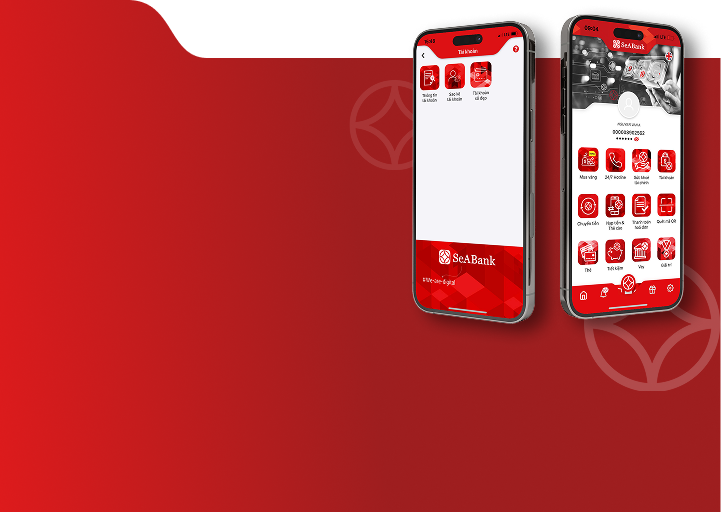News
8+ Tips in borrowing money to buy a house safely and effectively, avoiding debt
24/10/2025
To lend money to buy a house effectively and minimize risks, you should prepare a specific financial plan. Read now to grasp useful experiences in borrowing money to buy a house.
Understand the experience of borrowing money to buy a houseis an important factor to help you own your dream home safely and economically. Borrowing money to buy a house is not simply choosing a bank but also requires financial planning, choosing the right loan package and smart loan management. Follow SeABank in this article to gain the most practical experiences, helping you plan an effective home loan, avoid risks and save interest fees.
Quick summary of home loan experiences
- Choose a house that fits your financial ability and accumulate at least 30% of the house value in capital.
- Choose the appropriate loan type and bank
- Financial planning and loan management
- Prepare documents and read the contract carefully
1. Choose a house that fits your budget
Choosing a house within your financial means not only helps you get your loan application approved easily by the bank but also ensures stability for your future life.Normally, you should only borrow a maximum of about 40-50% of the house value, to avoid too much debt pressure in the future.
Before deciding, carefully calculate your total monthly income, minus essential living expenses, to determine the remaining amount that can be used to pay off bank loans.
2. Have at least 30% capital of the house value
Preparing at least 30% of the house value in advance is necessary because this is the minimum equity that most banks require borrowers to meet.
Having this capital available not only helps you reduce the amount you have to borrow, thereby reducing the interest rate you have to pay, but also shows the bank that you have financial capacity, increasing the chance of quick approval. This will also help you significantly reduce the financial burden and shorten the repayment period.

3. Consider the appropriate loan form
Choosing the right loan type that suits your financial situation and needs is one of the important experiences in borrowing money to buy a house. You can consider the following loan types:
- Mortgage loans: This is the most common type of loan when buying a home. The bank requires collateral, usually the house you intend to buy or another property of equivalent value. Mortgages have lower interest rates than unsecured loans, and longer loan terms, making them suitable for those who want to pay off their debt over many years.
- Unsecured loans: Borrowers borrow based on income or creditworthiness, without collateral. This form is more accessible but has higher interest rates and loan amounts are often limited.
- Overdraft: Allows you to withdraw up to the overdraft limit on your checking account. This is suitable for short-term capital turnover, but should not be used as the main loan for buying a house due to the high interest rate.
- Installment loan:Customers pay their debts periodically (monthly, quarterly) according to the signed contract. This form helps you manage your cash flow easily and ensures regular payment, avoiding the pressure of paying off debts in a rush.
4. Make a clear financial plan
You need to accurately calculate your monthly income, essential living expenses, and from there determine your monthly repayment ability. The general rule is that the bank installment should not exceed 40-50% of your net income, to ensure both payment ability and a stable life.
5. Choose a bank and loan package
Before deciding to take out a home loan, choosing the right bank and loan package is the key step to ensure your financial plan is both safe and cost-effective.
- Learn about banking: Compare loan packages, interest rates, and preferential policies of many banks to choose the most suitable package.
- Consider interest rates: Understand the difference between fixed and floating rates, and learn how to calculate interest to predict costs.
- Choose loan term: Choose a reasonable loan term, consider between short-term loans to reduce interest rates and long-term loans to reduce monthly principal pressure.

6. Prepare documents and read the contract carefully
Loan applications usually include proof of income, ID card/CCCD, household registration book or documents related to collateral. Careful preparation will help the application approval process go faster and smoother.
In addition, before signing the contract, you need to carefully read the terms related to interest rates, loan terms, repayment methods, prepayment penalties and other benefits. Understanding the contract will help you avoid risks, ensure your rights and manage the loan safely and effectively throughout the loan period.
7. Have a loan management plan
Before deciding to borrow, you need to proactively plan to manage the loan to ensure financial security, specifically:
- Early settlement (if possible):If you have additional income, you may consider paying off your loan early to reduce the total amount of interest you pay. However, you need to calculate carefully to ensure that it does not affect your monthly cash flow.
- Beware of penalty fees:Some banks impose a penalty fee for early repayment. Before deciding to pay off your loan early, read the contract carefully and understand the fee to avoid unexpected costs.
- Maintain income and avoid bad debt:Maintain a steady income and, if possible, seek additional sources of income to pay off your debts on time. This will help you avoid being classified as a bad debtor, protect your financial reputation and facilitate future loan transactions.

8. Choose a reputable bank with preferential interest rates
A reputable bank will help the application review process be quick, transparent and reduce risks. At the same time, you should compare interest rates and incentives between banks, including fixed and floating interest rates, early repayment support programs or free early repayment penalties.
9. 3+ Common mistakes when borrowing money to buy a house
During the home loan process, many people often make some common mistakes that directly affect their ability to repay debt and financial health:
- Borrowing beyond your means:Choosing to borrow too much compared to your actual income will cause debt repayment pressure, affecting your daily life.
- Just look at the initial promotional interest rate:Some customers only pay attention to the fixed interest rate in the initial period and ignore the floating interest rate later, leading to the actual debt repayment cost being higher than expected.
- No financial provision for contingencies:Lack of a reserve fund for unexpected situations such as illness, job loss or other unexpected expenses can cause you to delay debt payments, fall into bad debt and reduce your credit rating.
10. Borrow money to buy a house with simple procedures and preferential interest rates at SeABank
Do you need a loan to serve your home buying or consumption needs? Let SeABank meet your needs with flexible and convenient loan packages. SeABank offers many loan packages with preferential interest rates, flexible terms and loan limits to suit your actual needs such as:
- Unsecured loans:Loans for animal feed dealer chains, unsecured business loans, consumer loans, loans for members of the Vietnam Women's Union, loans for teachers - civil servants - public employees - overdraft loans.
- Consumer mortgage loans: Loans for home purchase - construction - repair, consumer loans with collateral SeAFlex, overdraft loans with collateral SeaAFast, car loans SeACar.
- Business loans: SeAPro personal and business loans.

Main advantages when borrowing capital at SeABank:
- Simple procedures, quick disbursement: Customers only need to prepare basic documents such as ID card/CCCD, household registration book, income proof and documents related to collateral. The application is quickly reviewed, helping customers save time and receive the loan soon.
- Competitive interest rates: The bank applies attractive interest rates, helping to reduce the financial burden for customers throughout the loan process.
- Flexible loan terms: Customers can choose a loan term that suits their personal financial capacity, with a duration of up to several decades depending on the product.
- Dedicated consulting service: SeABank team accompanies and supports customers from consulting, preparing documents to disbursement.
- Special offers: Some mortgage packages apply a principal grace period policy in the initial period, helping customers stabilize their finances before entering the official repayment period.
- Digital utilities: SeAMobile application helps customers manage loans, track repayment schedules and control personal finances easily, anytime, anywhere.
- Flexible unsecured loans: SeABank offers loan packages that do not require collateral, such as salary-based loans or loans without proof of income, helping customers access capital conveniently and quickly.
In addition to registering for a loan directly at SeABank transaction counters, customers can completely carry out this procedure online through the SeAMobile application or the SeANet system with the following simple process:
- Step 1 – Register online: Customers access the website or link provided by the bank, fill in information according to the form.
Step 2 – Get advice: Within 48 working hours, a bank specialist will contact you to provide detailed advice on the application and procedures. After that, the customer must submit the application at the nearest transaction counter. - Step 3 – Disbursement: Once the application is approved, the bank will disburse the loan as prescribed.
Above are the home loan experience that SeABank wants to share to help you have the most thorough preparation. By applying these principles, you can optimize costs, maintain stable debt repayment ability, and minimize financial risks. Start planning a smart home loan to make your dream of owning a home come true.
If you want to learn more about SeABank's loan products, you can contact the nearest transaction point or call Hotline 1900 555 587 or visit the website.www.seabank.com.vn for more details.
Related News
What is an ATM card? Functions, card classification and detailed instructions for use 2025 24/10/2025
Loan interest rate: Concept, calculation and secret to low interest rate loan 24/10/2025
Can a family's red book be mortgaged? Conditions, procedures and 5+ notes 24/10/2025
What is cumulative savings? 5+ Outstanding benefits to help "double" idle money 24/10/2025
Withdrawing Savings Before Maturity: Interest Rate Calculation and Things to Know 24/10/2025

What is an ATM card? Functions, card classification and detailed instructions for use 2025
What is an ATM card? What are its functions and what types of ATM cards are there and how is it different from a checking account? Refer to this article for details.
24/10/2025
Read more

Loan interest rate: Concept, calculation and secret to low interest rate loan
How is the interest rate on unsecured loans calculated? How to get a quick and safe unsecured loan? Refer to the article for detailed information.
24/10/2025
Read more

Can a family's red book be mortgaged? Conditions, procedures and 5+ notes
Can a family red book be mortgaged? What conditions are required and are the procedures complicated? Refer to the article now for the answer.
24/10/2025
Read more







